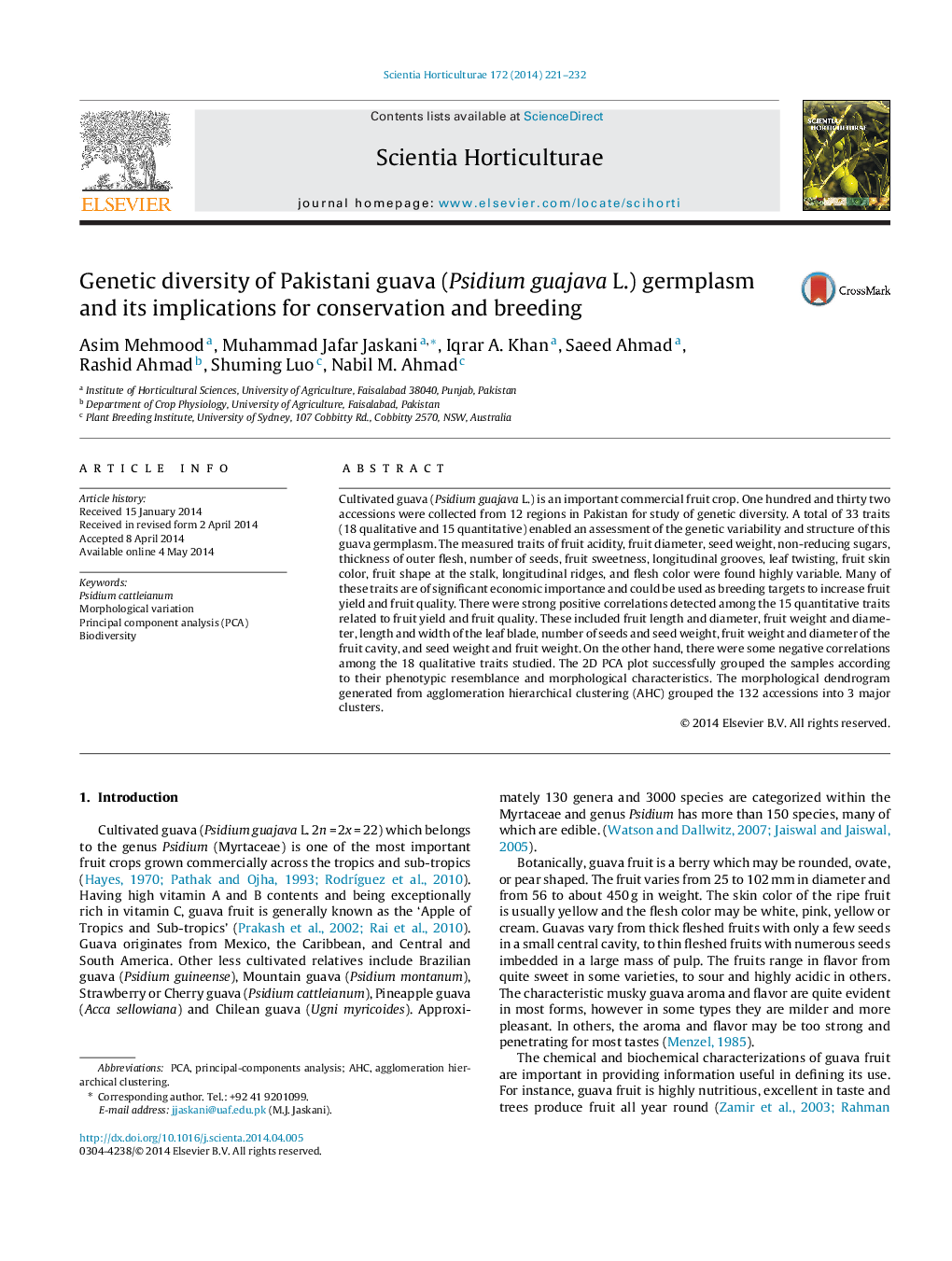| کد مقاله | کد نشریه | سال انتشار | مقاله انگلیسی | نسخه تمام متن |
|---|---|---|---|---|
| 4566835 | 1628826 | 2014 | 12 صفحه PDF | دانلود رایگان |

• A total of 33 traits were studied of 132 accessions.
• Agglomeration hierarchical clustering (AHC) can distinguish all the 132 accessions into 3 major clusters.
• This study helped for genetic relationships among guava accessions.
• It can be used for other open pollinated fruit plant germplasm management and breeding strategies as well.
Cultivated guava (Psidium guajava L.) is an important commercial fruit crop. One hundred and thirty two accessions were collected from 12 regions in Pakistan for study of genetic diversity. A total of 33 traits (18 qualitative and 15 quantitative) enabled an assessment of the genetic variability and structure of this guava germplasm. The measured traits of fruit acidity, fruit diameter, seed weight, non-reducing sugars, thickness of outer flesh, number of seeds, fruit sweetness, longitudinal grooves, leaf twisting, fruit skin color, fruit shape at the stalk, longitudinal ridges, and flesh color were found highly variable. Many of these traits are of significant economic importance and could be used as breeding targets to increase fruit yield and fruit quality. There were strong positive correlations detected among the 15 quantitative traits related to fruit yield and fruit quality. These included fruit length and diameter, fruit weight and diameter, length and width of the leaf blade, number of seeds and seed weight, fruit weight and diameter of the fruit cavity, and seed weight and fruit weight. On the other hand, there were some negative correlations among the 18 qualitative traits studied. The 2D PCA plot successfully grouped the samples according to their phenotypic resemblance and morphological characteristics. The morphological dendrogram generated from agglomeration hierarchical clustering (AHC) grouped the 132 accessions into 3 major clusters.
Journal: Scientia Horticulturae - Volume 172, 9 June 2014, Pages 221–232